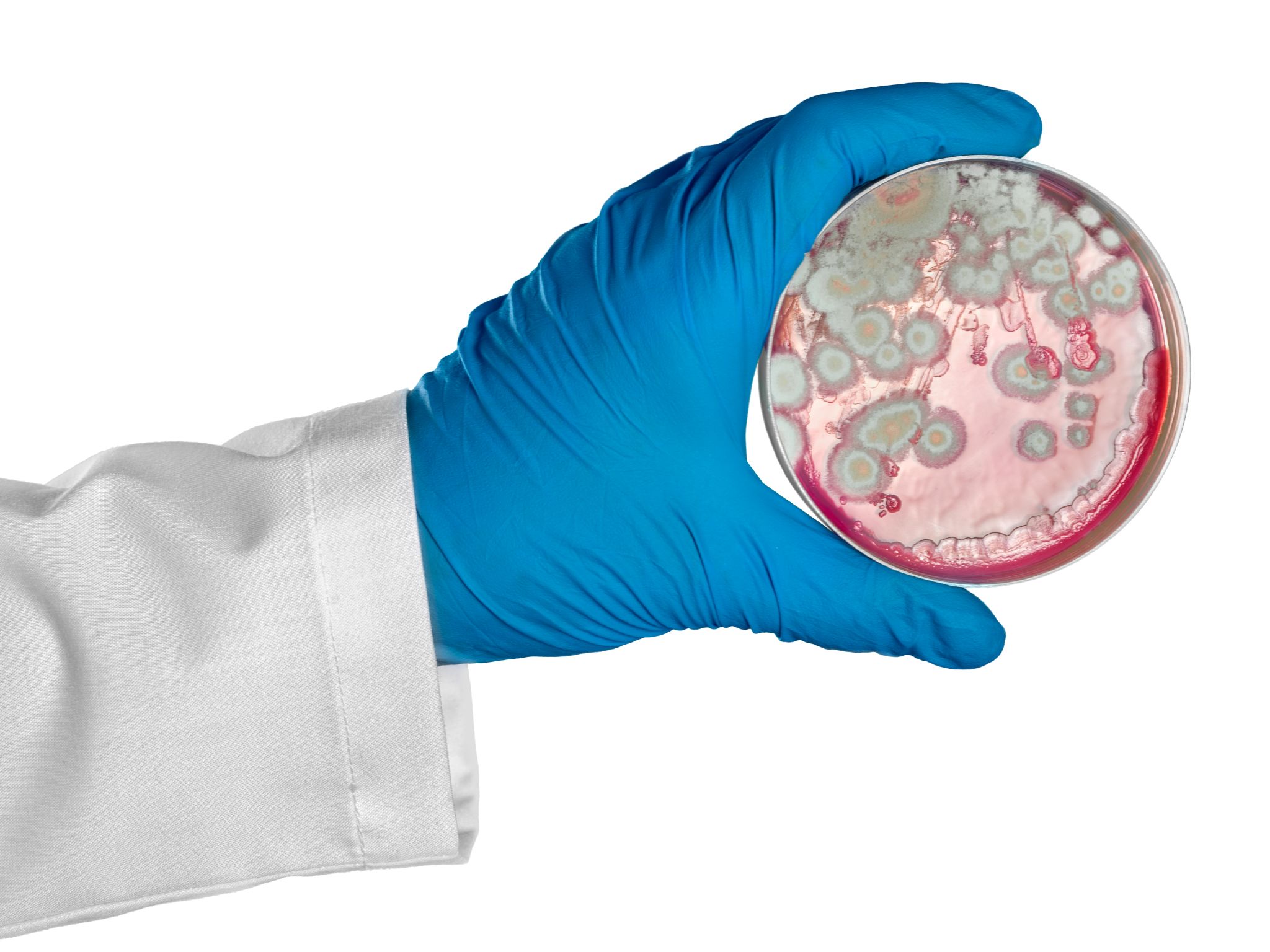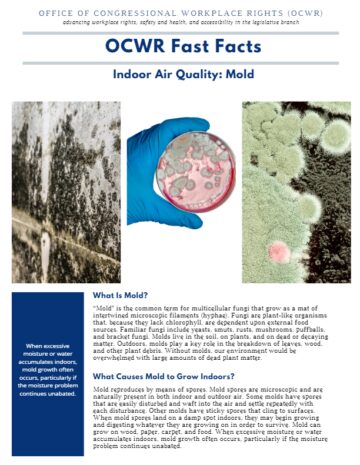What Is Mold?
“Mold” is the common term for multicellular fungi that grow as a mat of intertwined microscopic filaments (hyphae). Fungi are plant-like organisms that, because they lack chlorophyll, are dependent upon external food sources. Familiar fungi include yeasts, smuts, rusts, mushrooms, puffballs, and bracket fungi. Molds live in the soil, on plants, and on dead or decaying matter. Outdoors, molds play a key role in the breakdown of leaves, wood, and other plant debris. Without molds, our environment would be overwhelmed with large amounts of dead plant matter.
What Causes Mold to Grow Indoors?
Mold reproduces by means of spores. Mold spores are microscopic and are naturally present in both indoor and outdoor air. Some molds have spores that are easily disturbed and waft into the air and settle repeatedly with each disturbance. Other molds have sticky spores that cling to surfaces. When mold spores land on a damp spot indoors, they may begin growing and digesting whatever they are growing on in order to survive. Mold can grow on wood, paper, carpet, and food. When excessive moisture or water accumulates indoors, mold growth often occurs, particularly if the moisture problem continues unabated. Spores may remain able to grow for years after they are produced. In addition, whether or not spores are alive, the allergens in and on them may remain potent for years. There is no practical way to eliminate all molds and mold spores in the indoor environment; the only way to control indoor mold growth is through moisture control.
What Do We Currently Know About the Health Effects of Exposure to Mold?
Most fungi generally are not harmful to healthy people. A number of fungi commonly cause superficial infections involving the feet, groin, dry skin, or nails (for example, athlete’s foot). A very limited number of pathogenic fungi infect individuals who are not immunocompromised. Immunocompromised individuals are people with severely impaired immune function. Cancer patients receiving chemotherapy, organ transplant patients receiving immunosuppressant drugs, AIDS patients, and patients with uncontrolled diabetes are individuals at significant risk for more severe opportunistic fungal infections. Immunocompromised individuals should avoid cleaning mold.
About 10% of the population is allergic to fungal spores and hyphae. Only half of these would be expected to show clinical illness. Allergic responses include allergic asthma or allergic rhinitis (hay fever). Rarely, hypersensitivity pneumonitis (an inflammation of the deep lung tissue caused by high sensitivity to inhaled organic dusts) may follow exposure to very high concentrations of fungal (and other microbial) proteins. While mold allergy cannot be cured, it can be managed by reducing personal exposure and taking medications as prescribed by a health care professional.
Some species of fungi, including some molds, are known to produce secondary metabolites often referred to as mycotoxins. Mycotoxins are always produced in exceedingly small quantities. Some mycotoxins, when concentrated and purified, find a valuable clinical use (for example, penicillin and cyclosporine). Current scientific evidence does not support the proposition that human health has been adversely affected by the minute levels of mycotoxins that might be inhaled in mold contaminated homes, schools, or office environments.
How Can We Control Indoor Mold Growth?
Since mold spores can be found on all surfaces in all buildings, the key to controlling mold growth is to control the excess moisture it needs to live. If you see a water leak in your office, moisture visible on walls or window sills, or if you think you see mold growing on surfaces, report your observations to your supervisor or facility manager. It is important to dry water-damaged areas and items within 24-48 hours to prevent mold growth. Fix leaky plumbing, roofs, basement walls, or other sources of water. Wash mold off hard surfaces with detergent and water, and dry completely. Large cleanup jobs may need to be performed by a professional. Absorbent materials (such as ceiling tiles, insulation, drywall, and carpet) that become moldy must be replaced.
Fast Stats
- There are 100,000 species of mold.
- 1% of these mold species have known health effects.
- 10% of the population is allergic to molds.
- 100% of mold problems result from excessive moisture.

